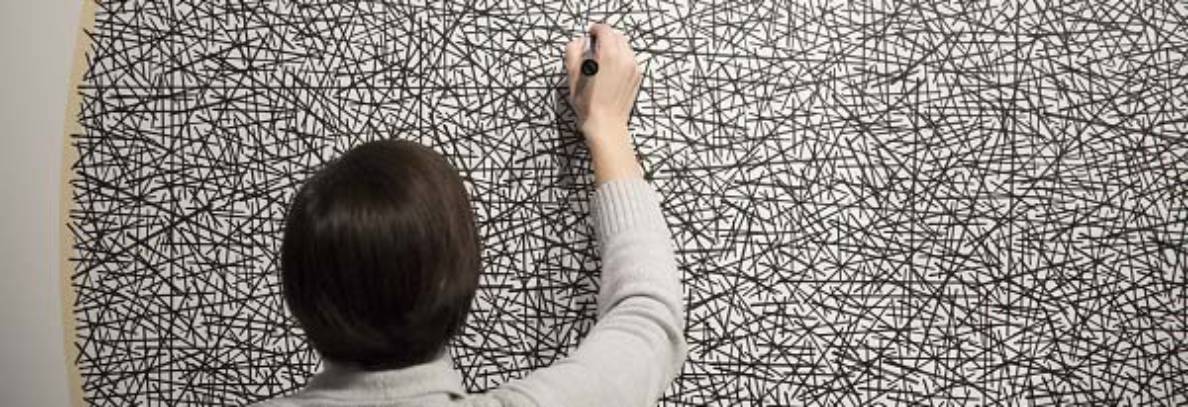Husband-and-wife duo Janet Cardiff and George Bures Miller create beguiling installations, art objects, and “walks,” audio recordings meant to guide viewers on short journeys through landscapes. The two began collaborating in 1983, and as is indicated by their walks, the couple’s work often activates space through innovative interactions of sound and movement. The two first achieved international recognition for their walks in 1995, a medium Cardiff had been experimenting with beginning in 1991 and that in her words, “changed my thinking about art.”

The Forty Part Motet (A reworking of “Spem in Alium” by Thomas Tallis 1573), 2001
“While listening to a concert you are normally seated in front of the choir, in traditional audience position. With this piece I want the audience to be able to experience a piece of music from the viewpoint of the singers. Every performer hears a unique mix of the piece of music. Enabling the audience to move throughout the space allows them to be intimately connected with the voices. It also reveals the piece of music as a changing construct. As well I am interested in how sound may physically construct a space in a sculptural way and how a viewer may choose a path through this physical yet virtual space.
I placed the speakers around the room in an oval so that the listener would be able to really feel the sculptural construction of the piece by Tallis. You can hear the sound move from one choir to another, jumping back and forth, echoing each other and then experience the overwhelming feeling as the sound waves hit you when all of the singers are singing.”

Forest (for a thousand years), 2012
“A remarkable thing about Janet Cardiff and George Bures Miller’s utterly captivating sound installation is how it blurs distinctions between site and art. You enter a clearing in the forest, sit down on a wooden stump, and simply listen. Cardiff and Bures Miller’s work incorporates the actual forest into an audio composition emitted from more than thirty speakers. Sometimes there is a near synchronicity of natural and mediated sounds, and it’s tough to discern what is live and what is recorded.”
– description from gregory volk, A Walk in The dOCUMENTA PARK, Art in America, June 15, 2012.

Experiment in F Minor, 2013
On a large table sits a collection of bare speakers of all shapes and sizes. Light sensors are inlaid into the edge of the table and as the viewers move around the room, their shadows cause the various sound and instrumental tracks to fade up and overlap, mingle and fade down. Numerous viewers in the room create a cacophony of musical compositions that vary according to where the audience walks or how many people are in the room. When the space is empty, the table fades to silence.

The Infinity Machine, 2015
“These mysterious, beautiful recordings, which Cardiff and Miller first encountered on a CD intended for meditation and relaxation, are varied and mesmerizing–like movements of a slow, science-fiction-inspired composition. Neptune sounds like crashing surf, Saturn and its rings drone and throb, Uranus chimes like bells, and the music of Earth suggests a forest at night, complete with bird- or insect-like chirps. Reworked as ambisonic recordings in which sounds seem to rotate and tilt and played in random order, they form the score of The Infinity Machine.” – Toby Camps, Curator of Modern and Contemporary Art, The Menil Collection
Sourced from the Cardiff & Miller Website


































